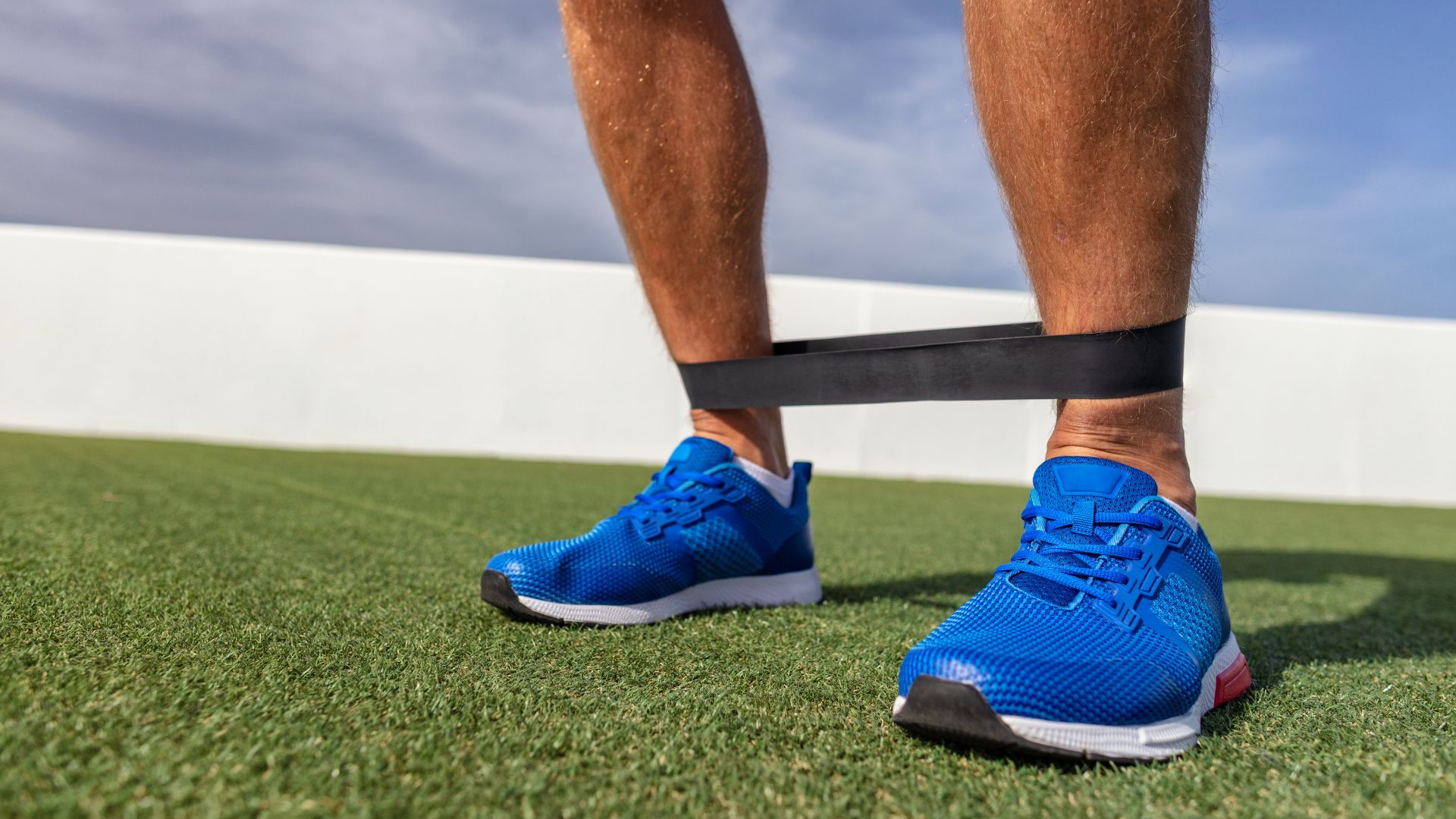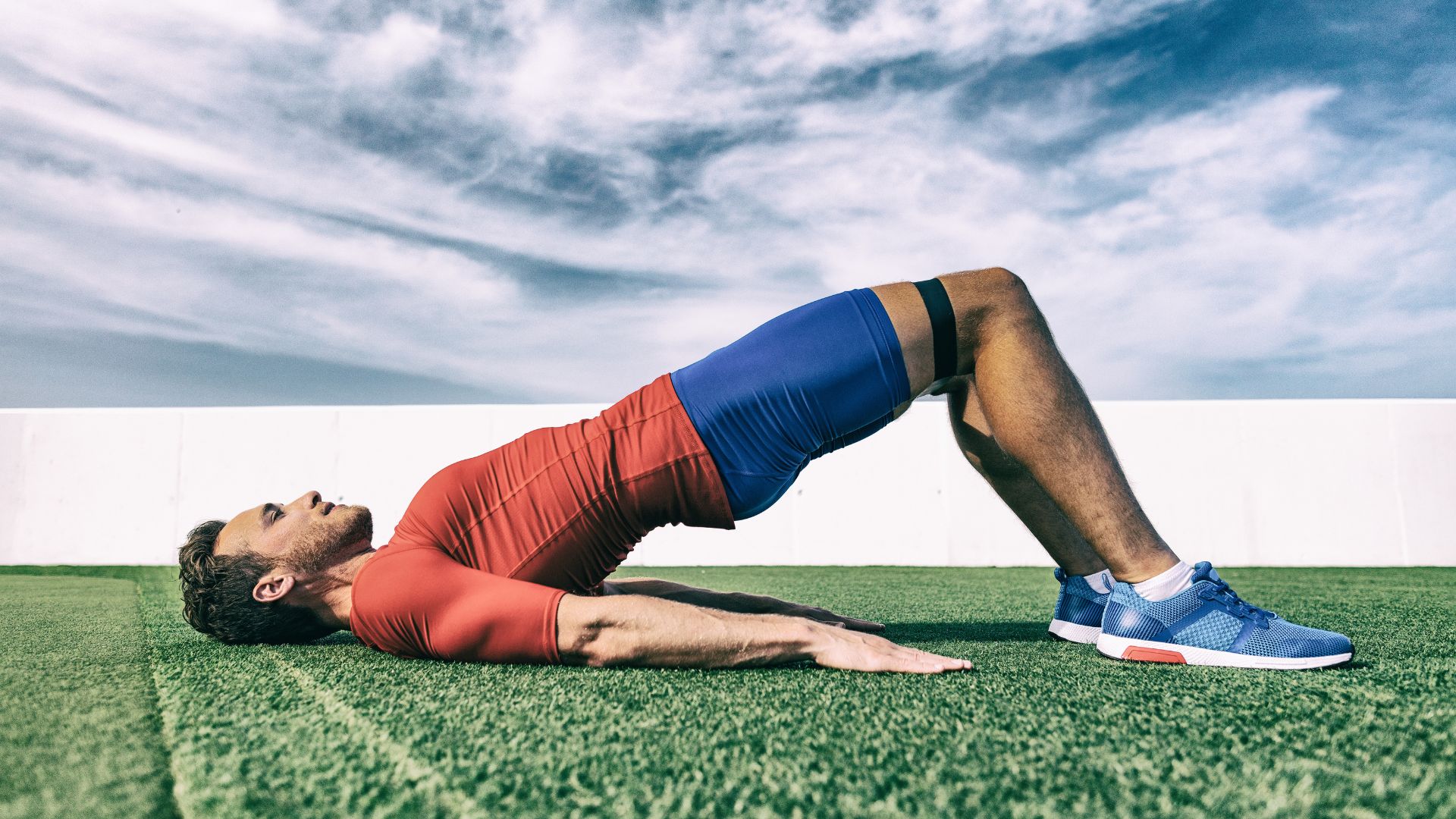
Looking for a new, cost-effective way to workout (read: no gym membership or fancy exercise equipment required)? Resistance band workouts are a great option. If you’re rolling your eyes at the thought of using what seems like a glorified rubber band to strengthen your core muscles, think again.
Resistance bands are a versatile and affordable fitness tool that can target any muscle group, including your core. They’re also lightweight and portable, perfect for at-home or on-the-go workouts.

How effective are resistance band workouts?
Resistance band exercises are highly effective for strengthening the core muscles. In one 2019 meta-analysis, researchers found resistance band workouts were as effective as traditional resistance band training with free weights or weight machines.
“Resistance bands might not look like much, but they can strengthen your muscles as effectively as more traditional weights,” exercise physiologist Christopher Travers, MS, tells the Cleveland Clinic. “In many ways, bands put more tension on your muscles and work them longer during movements.”
Benefits of resistance band workouts for your core
Don’t be fooled by their simplicity; resistance bands pack a serious punch when it comes to building a rock-solid core.
Here’s what makes them a go-to tool for core workouts:
- Hit every angle: Resistance bands can target multiple muscle groups in your core, including your abs, obliques, and lower back. You can use them for squats, lunges, rows, presses, and even Pilates and yoga moves.
- Level up your workout routine: Thickening or lengthening the bands cranks up the intensity, keeping your muscles guessing and constantly forcing them to adapt, meaning growth is inevitable.
- Joint-friendly gains: Unlike weights, bands go easy on your joints, making them perfect for guys with past injuries or limitations. A 2014 study backs this up, showing band exercises reduce back pain, boost core strength, and improve flexibility.
Types of resistance bands
Here’s a breakdown of the different types of resistance bands and how they can be used for core workouts:
- Loop bands: Loop bands, as their name suggests, form a loop shape and come in a variety of sizes. Wrap them around your legs, ankles, or arms for squats, lunges, rows, presses, and more.
- Tube bands: Longer than loop bands with handles at each end, tube bands allow for a wider range of movements and exercises. Think rows, chest presses, bicep curls, and shoulder raises. You can also anchor them to a door or post for added versatility.
- Mini bands: These small, super-strong bands are mini but mighty. They’re perfect for activating your core and glutes during squats, lunges, bridges, and even just standing and engaging your muscles.
- Figure-8 bands: Shaped like a figure 8, these bands offer two loops of different resistances. Use the wider loop for exercises like rows and presses, then switch to the smaller loop for bicep curls and tricep extensions. They’re a great way to target different muscle groups in one exercise.
- Spud bands: Spud bands are thick, closed-loop bands for advanced lifters looking for serious resistance during squats, deadlifts, and other strength-building exercises.
Note: This isn’t a comprehensive list. Some resistance bands have special features like handles and attachments. The CastleFlexx, for example, is designed to help people with chronic pain, limited mobility, or rehabilitation needs.

How to use resistance bands: 4 core workouts
Here are four resistance band core workouts designed to sculpt your midsection into a strong and toned powerhouse:
The mountain climber
- Step into a high plank position with the band looped around your ankles.
- Engage your core and alternate driving your knees towards your chest, mimicking a running motion.
- Keep your hips square and your back flat, feeling the burn in your abs with each rep.
Dead bug
- Lie face-up with your arms and legs extended straight up towards the ceiling, holding the band in your hands.
- Keeping your core engaged, slowly lower one arm and the opposite leg towards the floor without letting your back arch.
- Bring them back to the starting position and repeat on the other side.
Plank with leg lifts
- Start in a high plank position with the band looped around your ankles.
- Keeping your core engaged and back flat, lift one leg off the ground, squeezing your glutes as you raise it.
- Lower the leg back down and repeat on the other side.
Anti-rotational press
- Anchor the band to a secure post at shoulder height.
- Stand with your feet shoulder-width apart, holding the band handle in front of your chest with both hands.
- Keep your core tight, and press the band away, resisting the rotational pull.
- Slowly bring the band back to your chest and repeat.
Aim for three sets of 10-12 reps for each exercise, gradually increasing the band’s resistance as you get stronger.



